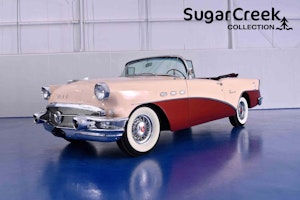Media | Articles
Just one more fire truck
Operating a towing company in New York City was not joyful work in September 2001. “I used to go down to Ground Zero a lot,” Andrew Leider recalled, referring to the site in lower Manhattan where the World Trade Center towers stood before the Sept. 11 terrorist attack. “And we used to pick up a lot of the fire trucks of the first responders that were destroyed. We towed them away – took them to Staten Island for scrap.”
“That experience encouraged me to get involved,” he said. Honoring the firefighters meant a deep commitment: He wanted to rescue one of the trucks and preserve it. “So I decided to buy one fire truck,” he said. “Then I bought a second one. Then I bought some more.”
From that beginning, Leider acquired vehicles rapidly. His holdings grew far beyond the small homage he originally envisioned, now comprising some 500 fire trucks and fire engines.
There is a distinction that should be noted here: A fire engine refers to a vehicle capable of pumping water. The term fire truck is reserved for other types of vehicles, usually having one or more ladders. Furthermore, fire-fighting vehicles can be as small as an 18-foot pickup, or as long as a 45-foot hook and ladder truck.
“I consider them 20th century industrial art; each one is a unique piece,” he said. “That’s what got me hooked. Fire departments special-ordered each one to their individual needs and specifications. They’re not like dump trucks, where there are only so many variations you can get.”
Marketplace
Buy and sell classics with confidence
Leider, 65, is trying to stop acquiring more fire trucks now. He’d like to shrink his collection somewhat but is constantly beseeched by fire apparatus owners to adopt one more piece. “People buy them and then realize they don’t have any place to keep them,” he said. The biggest problem with owning big fire-fighting vehicles is space. “Or departments contact us to donate their old vehicles. They don’t know what to do with them. I have a hard time seeing them junked.”
Also, “none of them are designed to sit outside,” he explained. “Inside, they will last a long time – longer than any of us now alive.” But outside, they deteriorate rapidly. Tires and rubber hoses rot, metal surfaces rust and electrical systems corrode.
Though most of his collection consists of vehicles from the last decade or two, he does own dozens of pre-World War II vehicles and a few dating back as far as 1915. “Those are the hard ones to find,” he said.
Leider bought an old Ethan Allan furniture manufacturing plant in Eldred, N.Y., to house the collection, hoping to develop a museum there. But the collection grew too large for that building, so he acquired another. That also became inadequate.
Also, Leider notes, the local government wasn’t especially welcoming to his museum idea. Ordinances were passed requiring him to upgrade the buildings at great cost, including installing a fire sprinkler system – ironic for a site that would house hundreds of working fire-fighting vehicles.
So he has purchased even larger buildings about 300 miles away in western Pennsylvania, where he feels more love from local officials. “I’ve moved about 270 of the vehicles there,” he said. “About 230 are still in New York.”
There are no firm plans for when he might open his dream museum, so at this point he only shows off his collection on special occasions like conventions hosting fellow collectors, parades or holiday displays.
“People love them,” he said. “We start ‘em, run ‘em down the road, ring the bells, turn on the sirens. They’re a lot of fun.”
20170726013253)









